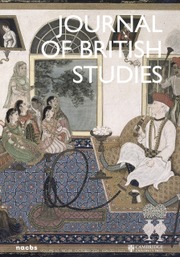It is long past time that someone wrote the history of black urban neighborhoods in 1980s Britain as more than a history of riots and unrest. Kieran Connell does exactly that in Black Handsworth: Race in 1980s Britain. He places Handsworth, a well-known black community in Birmingham, at the center of his analysis and examines the everyday experience of “both living and articulating race” (5) by looking at politics, culture, and the practices and patterns of sociability. Political organizations, social clubs, churches, and domestic spaces are analyzed as everyday practices of black residents during the 1980s, as are cricket, the popular game dominoes, and the importance of the front room for domestic life. Following Paul Gilroy, Connell’s main aim is to recreate a particular “structure of feeling” (5) in the “black Atlantic” (10): he argues persuasively that this structure of feeling was shaped by a diasporic consciousness, which became a core presence in postcolonial Britain in the 1980s. A broad base of primary sources helps to make the different case studies come to life, particularly Connell's wide range of interviews, which provide a broad base for his analysis of the everyday in Handsworth.
This micro-history sits at the intersection of cultural history and cultural studies. The book is divided into four chapters. The first chapter focuses on local political activism of ethnic groups in Handsworth. Here, Connell engages with the argument that the money allocated by the local government to ethnic groups from the 1960s on fractured an overarching “black” political consciousness—encompassing both Caribbean and South Asian residents—along ethnic lines. Taking the history of the groups All Faiths for One Race, the African-Caribbean Self-Help Organisation, the Asian Youth Movement, and the Indian Workers’ Association as case studies, Connell shows that state intervention was more complex and more varied: there was cooperation among these groups, but they were divided less by the government's pushing an insidious agenda than they were by forces within both Caribbean and Indian groups that worked toward advancing their own agenda.
The second chapter focuses on the visual politics of representation. From the 1960s on, there were attempts to subvert the well-worn images of black people living in Britain as victims of poverty and deprivation. Particularly since the riots in the early and mid-1980s, black people were often seen as a collective threat rather than in individual terms. The chapter addresses wide-ranging attempts to develop alternative visual representations, focusing on community photography, documentary photography, and experimental documentary film projects by the Black Audio Film collective. Connell argues that these attempts were often only partially successful, as photographers often returned to the imagery of poverty and deprivation. Instead, these attempts at a more candid representation of black life presented a sometimes gendered view, were occasionally misunderstood and not free from ethical fallacies. The case of the community photographer John Reardon exemplifies the latter: Reardon, one of the community photographers sympathetic to Handsworth, sold one of his images of the 1985 riots to the national popular press—an image of a man throwing a bomb that came to symbolize the violent nature of the riots.
Chapters 3 and 4 form the centerpiece of this book: while the former focuses on the everyday culture of music and dance, everyday sociability takes center stage in the latter. Connell convincingly shows how cultural practices were shaped by the experience of the diaspora, while black globality functioned as a tool for making sense of events in the locale. However, the concrete reference points for this black globality differed markedly. While the case study of Rastafarianism, in particular, shows how Africa became an important reference point for the younger generation and facilitated the development of a black identity that was used as a way of coming to terms with the disadvantages of being black in 1980s Britain, Connell shows how everyday sociability—cricket, pubs, clubs, and churches, as well as domestic life, particularly the significance of the front room—was shaped by the experience of the Caribbean diaspora. His study of the front room and the pervasiveness of “colonial Victorianism” (121) is particularly pertinent, illustrating a milieu structured by cultural capital and class-based politics of aspiration.
Taken together, Connell presents a convincing argument that this multifaceted and multigenerational black milieu had a transformative effect on the British metropole. By building clubhouses and furnishing front rooms, black people signaled they were here to stay, even though their life was shaped by both the legacy of colonialism and a feeling of diaspora.
If I have one quibble with this study, it would be about how Connell deals with the historiographical debate about individualization. Connell presents his case studies as counterevidence to the prevalent description of the Thatcher years as a period of growing individualization. A more detailed discussion of this current historiographical field would have added further depth to the analysis, particularly to gauge how exactly these expressions of black identity and community stood both in contrast to and interacted with wider ideas of individualization. As it stands, Connell has delivered an enriching history of everyday practices in Birmingham during the 1980s that established Handsworth firmly in the black Atlantic.


